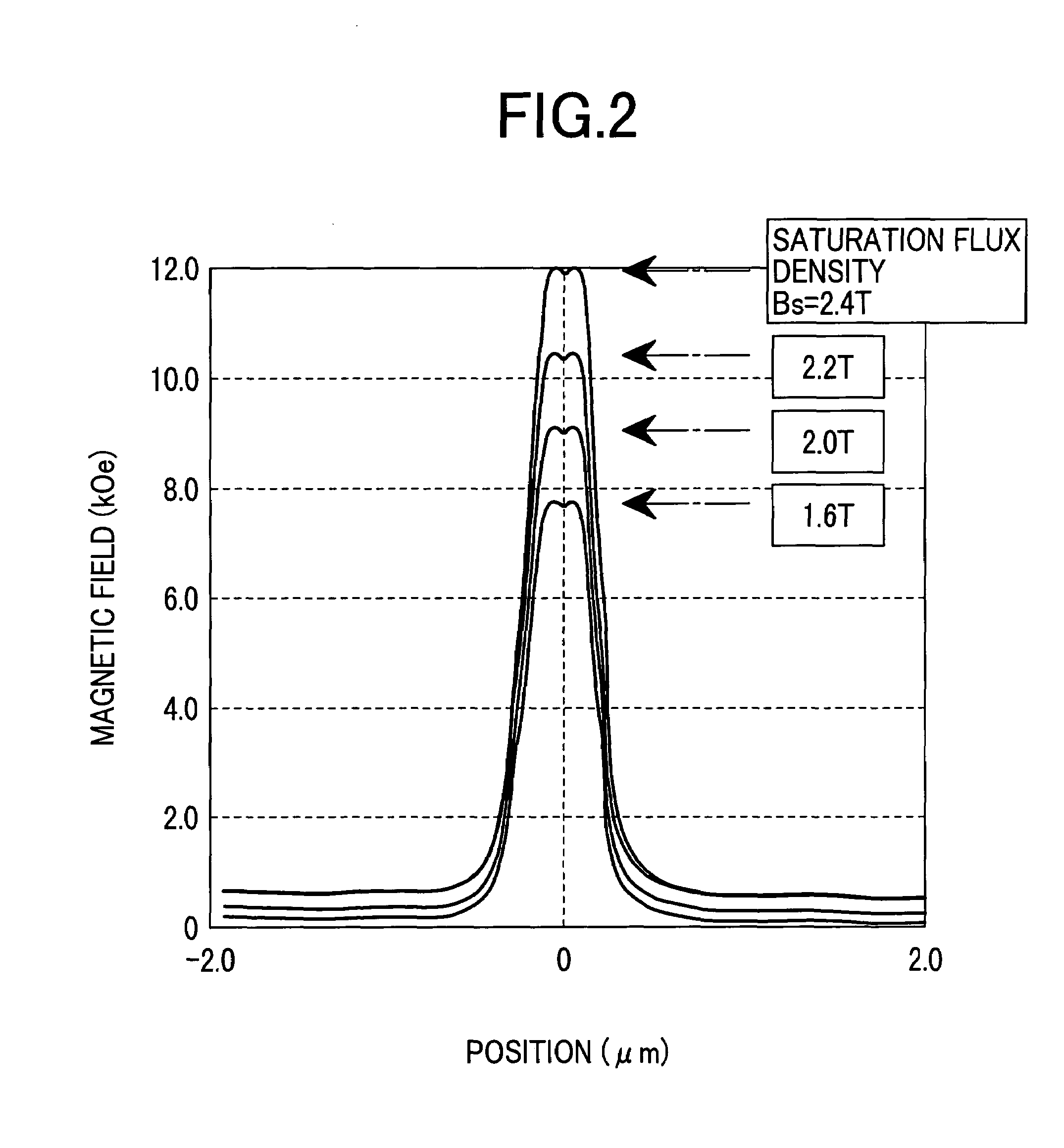Thin film perpendicular magnetic recording head, their fabrication process and magnetic disk drive using it
- Summary
- Abstract
- Description
- Claims
- Application Information
AI Technical Summary
Benefits of technology
Problems solved by technology
Method used
Image
Examples
first embodiment
[0107](First Embodiment)
[0108]FIG. 6 is a cross sectional view showing the structure of the magnetic multilayer of the first embodiment of the present invention. A high Bs layer 63 and a nonmagnetic layer 64 are alternately deposited on the substrate 61 by way of the underlayer 62, and finally covered by a protective layer 65. This high Bs layer 63 is Fe70Co30 having a body-centered cubic structure. The underlayer 62 and nonmagnetic layer 64 are both Ni80Cr20 (film thickness 3 nanometers) having a face-centered cubic structure. FIG. 6 shows the magnetic multilayer as seen from the medium surface facing the main pole.
[0109]The thickness of each high Bs 63 layer is calculated for a total high Bs layer thickness of 200 nanometers so each layer in the example in FIG. 6 is 25 nanometers. The low Bs layer is nickel-chromium alloy and is 3 nanometers thick. Measuring the magnetization curves showed that the magnetic coercivity along the easy axis and the hard axis were both below 4 Oe, the...
second embodiment
[0128](Second Embodiment)
[0129]In the first embodiment, the layers were formed to the same thickness within a certain range (generally about ±5%) for variations during forming of the high Bs layer for the main pole. However, by purposely forming a structure of different thickness, even further improvements can be achieved.
[0130]FIG. 15 is a cross sectional view showing the structure of this type of embodiment. Here, a film thickness difference of 20 percent was made between a first high Bs layer (odd numbered high Bs layer from the substrate side) 63 and a second high Bs layer (even numbered high Bs layers from the substrate side) 63′ and these layers then alternately formed in a laminated structure. By utilizing this structure, an identical magnetic state can he constantly achieved for each magnetostatic coupling by high Bs layers in a remanent magnet state. Consequently, the same characteristics appear for 1010 cycles of write operations which is an extremely large number, showing...
third embodiment
[0131](Third Embodiment)
[0132]An example of the second embodiment with high Bs layers of the main pole having different structures for each layer is shown in FIG. 16. This embodiment has a structure where among the high Bs layers, the high Bs layer nearest the substrate and the high Bs layer farthest from the substrate are made thinner than the other high Bs layers. In this structure, since these two layers have only a high Bs layer on one side, the weak remanent magnetic fields are not applied to the media. It was also found that satisfactory read / write characteristics can be obtained with no loss in long term stability of bits written on the magnetic record medium.
[0133]The structure of the write element used in all of the embodiments up to now is shown in FIG. 8. The following embodiments of the present invention are for a thin film magnetic head other than the structure shown in FIG. 8.
PUM
 Login to View More
Login to View More Abstract
Description
Claims
Application Information
 Login to View More
Login to View More - R&D
- Intellectual Property
- Life Sciences
- Materials
- Tech Scout
- Unparalleled Data Quality
- Higher Quality Content
- 60% Fewer Hallucinations
Browse by: Latest US Patents, China's latest patents, Technical Efficacy Thesaurus, Application Domain, Technology Topic, Popular Technical Reports.
© 2025 PatSnap. All rights reserved.Legal|Privacy policy|Modern Slavery Act Transparency Statement|Sitemap|About US| Contact US: help@patsnap.com



